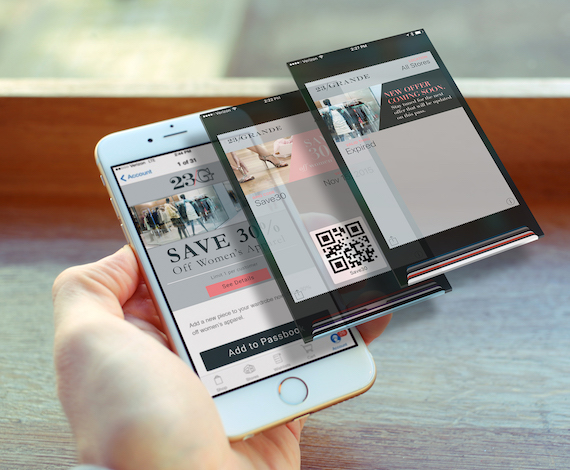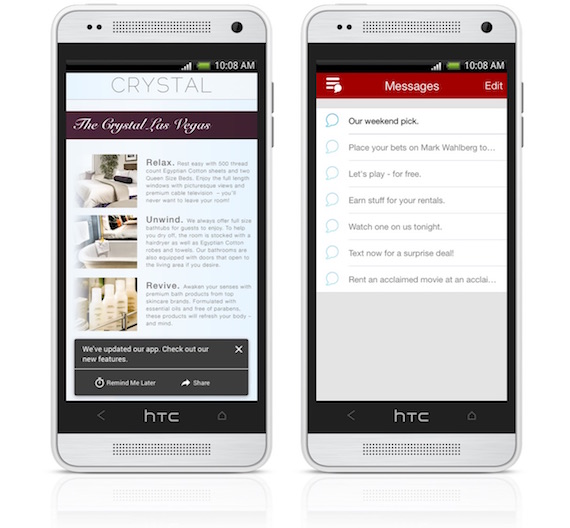Have you ever deleted an app from your device because it sent you too many push notifications? Or wondered why your latest flight info is popping up as a text message, rather than in your digital wallet?
Bad messaging channel choices, that's why. Mobile devices offer you a huge number of different ways to connect with your users and customers. Each channel is best suited to convey different types of messages. Pick the right one for what you want to say!
If you don't have an app…
Even without an app, you have a few options for getting messages to your users on their mobile devices.
Text messaging
The original mobile channel. SMS and MMS can reach anyone who's given you their number, and your messages arrive right away. You're limited in how nice you can make your message look, and text messages aren't very interactive. But all you need is a phone number to get started.
Text is best used for simple, urgent messages, particularly transactional ones, like flight status updates. (But only if you don't have an app!) They're often used for discounts and another infrequent announcements as well, but you'll have much more success with messages sent through an installed app.
Website
Marketers often don't think of their website or web app as a communication channel. But it is. It's just passive; mostly, you have to wait for your users to come to you. This makes it difficult to provide timely updates, and you lose a lot of context, like your visitor's exact location. But you can closely track what your user is doing, and let them immediately take many different types of actions.
Your website is best used for messages that aren't urgent, and that are meant to be acted on when your user is on your site. For example, a month-long sale is useful to promote through your site, since many of your regular visitors will see it, and you can link them right to sale items. Shipping notifications are much less useful to send through your site, since your user won't see them right away. As another example, it's hard to re-engage dormant users on your site, but it's a great channel for acquiring new ones.
Digital Wallet
Apple and Google are constantly adding features to digital wallet passes. It's appropriate to think of the digital wallet as a lightweight version of an app. Passes are easy to distribute, easy for a user to add, and can have some branding that helps users recognize and remember you.
They can pop up at certain locations where they're most useful, for example, near your store. And they can be updated with new information as needed.
Use a digital wallet pass any time you would otherwise hand your user a piece of paper or plastic. Tickets, loyalty cards, payment cards, and coupons are all great uses for digital wallet passes. Specific messages about product updates, promotions, and transactional communications are not as good a fit.

If you do have an app…
If you have an app, your options broaden considerably.
Push notifications
Everyone's received a push notification. If you get a user to install your app, you can send one at any time; your user doesn't even have to be in the app to see it. They're easy to brand, and you can even specify actions for the user to take with a single tap.
Push notifications are great for delivering small amounts of real-time information (like sports scores, notifications, and news), and also for getting a user to take an action, such as learning about a special promotion. However, they only reach people who have opted-in, which is usually less than half of your users. They're also high stakes; users will notice immediately if you send irrelevant content, and they'll turn off push access off for your app, or even uninstall it.
In-app messages
In-app messages are similar to push notifications, but they're delivered to your users while they're active in your app. You can put real-time updates in them, and, unlike push notifications, they don't require opt-in in order to be received.
In-app messages are great complements to push notifications for users who haven't opted in, and can be used to send similar, highly-targeted messages, such as real-time information that's relevant within the context of your app.

Message center
This is a completely passive channel inside your app. The message center archives messages that have been sent to your users in the past, and makes them accessible later. This is a great channel for storing things that don't require immediate action and that might be most useful when a user is already in your app.
What should you send?
No matter what channel you use, your user's attention is a precious resource, and you have to make sure that what you're sending is valuable to them. Answer these questions before you use any of these channels:
What's the purpose of your message?
What action do you want the user to take when they receive it? Figuring this out will make it easier to decide on whether you need a channel with interactivity; it will also help you figure out how truly urgent your message actually is, and how to measure its success. Is there a call to action, or is this purely for brand awareness?
What context does your message matter in?
Mobile messaging is all about context: time, location, user preferences. Deciding what context is truly important will help you pick the right channel. For example, if something matters in real-time, you'll want to use push. If it matters when the user gets to it, you could try an in-app message.
Will your user care?
Worry about whether what you're sending is useful. If you're Twitter, it might be OK to send 20 push notifications a day, if your user wants to keep a close eye on their followers. If you're Candy Crush, maybe you shouldn't even send one push notification a week, because your user is a casual gamer who doesn't care about new features. If you focus on delivering what your user wants, you'll have to worry a lot less about everything else.
Conclusion
As a mobile marketer, you've got lots of channels to choose from. We haven't even touched on emerging channels, like chatbots and wearables, which will play an increasingly large role in delivering useful content to your users. The key with any channel is to match the characteristics of the message to the medium. And don't forget to listen to your users, too - if you pay attention to their responses and preferences, they'll tell you how and what they want delivered.
About the Author: Justin Dunham is Lead, Marketing Technology and Analytics at Urban Airship, the leading mobile engagement platform. Urban Airship helps leading brands engage their mobile users and build high-value relationships from the moment customers download an app. For more, follow us on Twitter or LinkedIn.
Walang komento:
Mag-post ng isang Komento